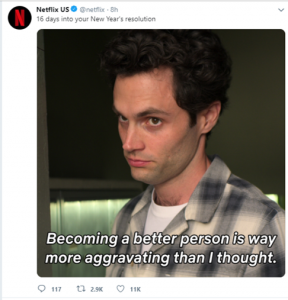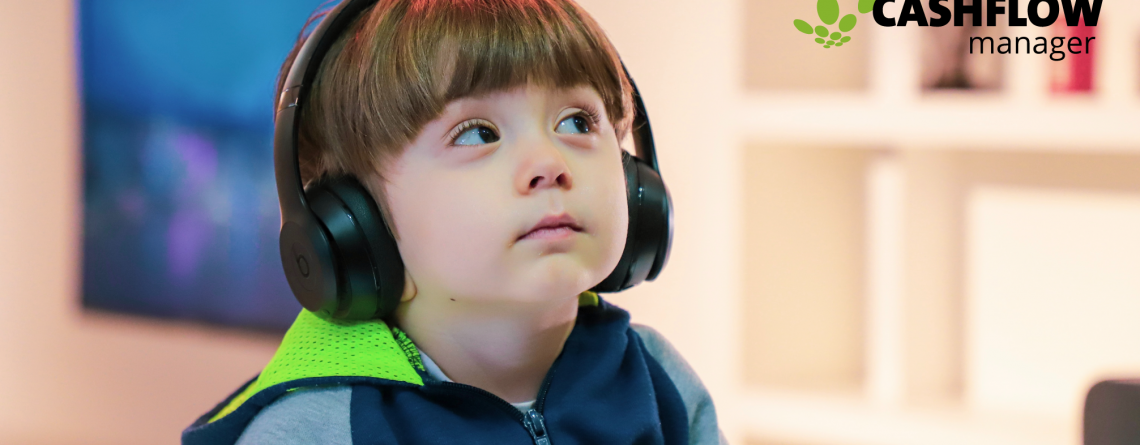Social listening: know your customers
Customers are now spending more time than ever on social platforms – averaging at 2 hrs and 23 mins a day. Not only used as an escape from everyday life, social media has become a research, comparison, review and enquiry tool to check before and after buying.
Both the rise in usage and change in behaviour is why social media has become vital part of every marketing and customer engagement strategy. According to Smart insights, 90% of social media users have taken to social to communicate with a brand with 63% expecting companies to offer some sort of support through social media.
This expectation does not only apply to large organisations. Customers assume that every small business – no matter the size – will have some sort of social media presence.
With this in mind, every business owner should both change their perspective and alter their approach to social media.
Think about satisfaction not just sales.
Many business owners use social media as a method of gaining customers; it is a fantastic tool to raise brand awareness, promote sales messages, and connect with your customer base.
But consider retention not just acquisition.
A key part of keeping your customers coming back again and again is great service. Today, customers expect that service on social. A happy customer base – especially within B2B – means more referrals for your business; word of mouth is a powerful tool.
Unfortunately, many business owners forget to acknowledge the conversations their customers are having online. Posting product pictures, sales updates and discounts is a great way to get the message out quickly (and cheaply). But many forget to monitor exactly how customers are interacting with their brand or even if they are satisfied with the product or service.
In an increasingly connected world, where consumers are faced with many of solutions for every problem, there is an expectation that brands go above and beyond to provide a personalised, one to one experience. When they don’t get one, they’ll take to social media looking for alternatives.
This may seem daunting, but address this with a positive mindset. The fact that customers are willing to take the time to message, comment, like, share, or react to your brand, means you have access to valuable insight.
What are they saying? How are they feeling? Are they interacting with each other? Listen to your customers and adapt your service to their needs. Adapting your business processes to meet the demands of the customer is a big ask but improving customer retention by just 5% can increase profits by between 25% – 95%. Studies produced by Bain and Company, alongside Earl Sasser of Harvard Business School, has shown that customer loyalty has a high impact on the bottom line.
So, how can you action this?
Social listening
Social listening is a tool used by marketers and business owners to educate themselves on current brand related social media events. It finds the core of social conversations and gives you a framework to implement long term changes. The aim is to gain improved insight on the customers thoughts and feelings around your business and what you offer. That’s the first step.
The next step involves taking this knowledge and looking for ways to put your discoveries into action. Action is what separates social listening from simply tracking your social channels. i.e looking at engagement rates, number of mentions, likes, comments etc. This activity is all about collecting the data you need to monitor what has already occurred and make changes to increase engagement, follower numbers and general reach.
Social listening is a little different. Instead of just monitoring this data, social listening looks beyond the numbers. It helps you to understand how your customers genuinely feel rather than what they are engaging with and how often.
How to conduct social listening: a few rules
The first thing you’ve got to ask yourself…
1. Where are your customers?
Before we dive into how to conduct social listening, you need to find out where your customers are talking about your brand. There are many social media platforms all with different audiences, so be sure to cast a wide net. It could be Facebook, Twitter, Pinterest, Linkedin, Reddit. To start with, check the platforms where you have the largest presence.
To make this a little easier, software such as Hootsuite, Talkwalker, and Brandwatch are great tools to get a sense of where brand related conversations are happening across social media platforms
2. What to do once you’ve found them:
- If and when you hear a complaint, investigate immediately and act
- If someone asks for something – whether it’s a new product or service – consider whether it will be a good opportunity
- Get a compliment? Show some appreciation and take the time to say thank you
- If you see a query or review, acknowledge the time they have taken and reply
Applying these simple steps will provide a fantastic opportunity to add a personal element to your brand whilst sending the message that you care about how your customers.
3. Adjust your plan… in real-time
Engaging with your online community is good, but only if it comes with positive social feeling. Social listening allows you to detect real-time changes in emotions, so you can get a sense of what caused the transition – good or bad. So, check through your recent posts to get a sense of what’s been going well and not so well.
Rather than simply looking at these changes, you can use social listening to find ways to act on them.
For instance, maybe you own a takeaway restaurant. Your customers have been sharing how they love your food, but it takes too long to deliver. There is an opportunity there for you to think about hiring another chef or an additional delivery driver for busier periods. Either of these options will have pros and cons but through trying different methods, it may lead to great results and potentially make for a happier customer base.
So, what have other brands done?
Netflix

Despite the first drop in subscribers since 2011, Netflix remains the world’s largest subscription streaming service with over 158 million subscribers. An element of its position within the market can be attributed to excellent social media activity. Netflix does a great job of retweeting customers even if they have just two followers. They also use a playful tone and crack a few jokes relevant to it’s main user base: millennials.
Through social listening, Netlflix discovered that many watchers, bingeing their favourite shows, were nodding off halfway through episodes. What did they do in response? Netflix socks. If you fall asleep whilst watching, the socks pause your Netflix show, so you can keep track of exactly where you were in the episode.
Remember the importance of customer retention we mentioned earlier? Well Netflix went the extra mile. You can’t just buy the socks ready-made; you must build them yourself. After all that effort, surely you’re going to reward yourself with more Netflix bingeing for years to come, just to make use of your comfy achievement. This creative thinking is an excellent method to keep customers dedicated to a brand in an innovative way.
Zelmer

Zelmer, a European vacuum cleaner company noticed this tweet mentioning their brand in a hashtag – a birthday cake created for a 4-year-old vacuum cleaner enthusiast baked by his mother. In response, Zelmer invited the boy and his mother to tour the factory, immediately creating a lifetime customer advocate.
To wrap up
Today, customers are more empowered than ever before to hold two-way conversations with brands. It is down to the small business owner to use the full potential of social media to create a personalised, informed, and supportive customer experience.












Leave a Reply